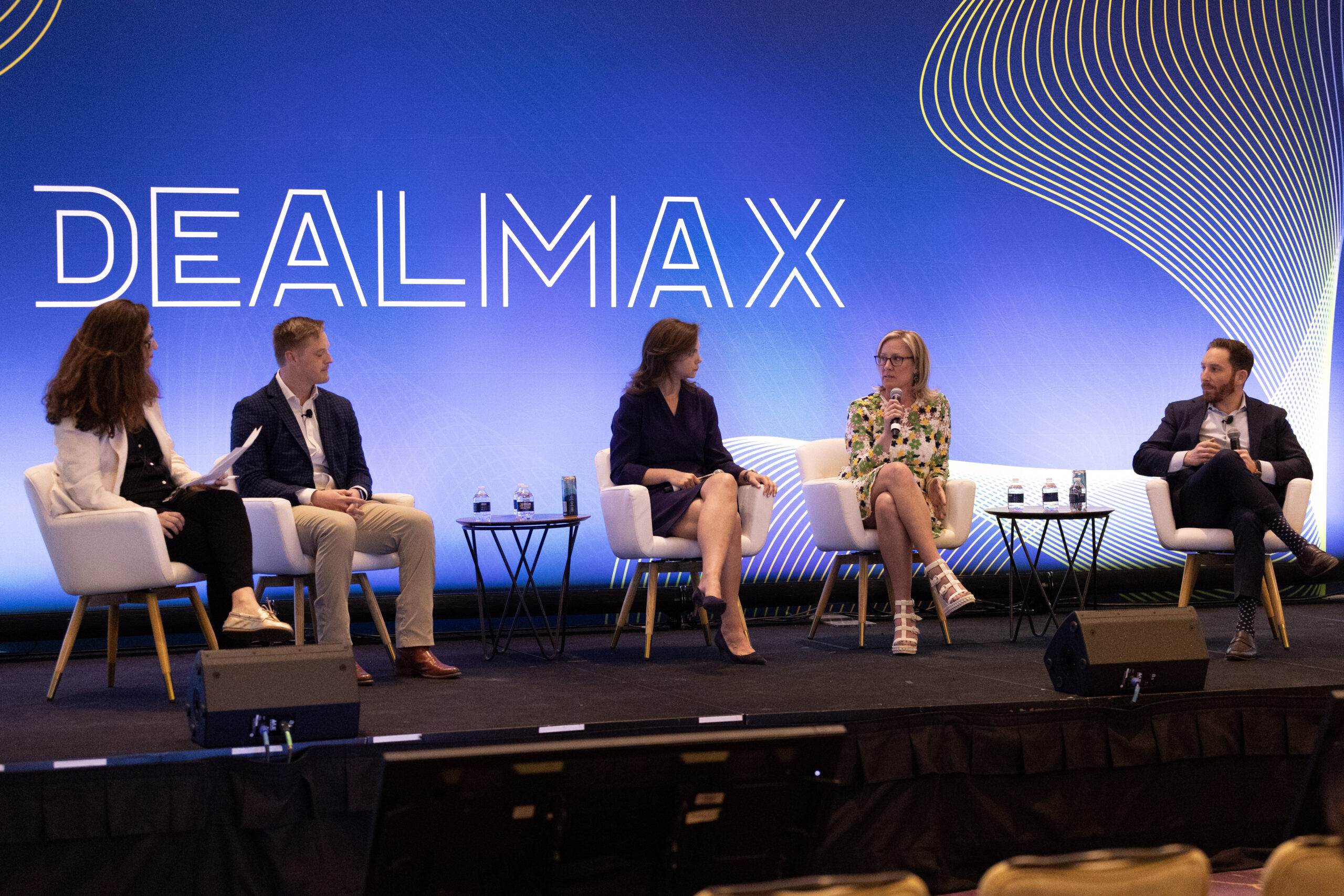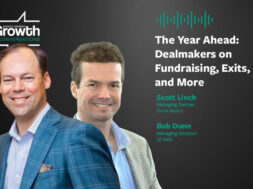Dealmakers Anticipate M&A Uptick in H2 2025 Despite Market Uncertainty
Key takeaways from ACG’s DealMAX conference

ACG’s DealMAX conference on April 7-9 brought together nearly 3,300 middle-market M&A professionals in Las Vegas to hold meetings, network and catch up on the latest developments in the market.
The event featured 30 content sessions with nearly 75 speakers, who covered topics ranging from the state of the M&A market to artificial intelligence’s influence on dealmaking, the adoption of shared ownership models in private equity, and more.
Several recurring themes emerged throughout the conference. We’ve summarized those highlights below:
State of the Market
Over the past several years, companies have faced hurdles ranging from tariffs, political uncertainty and global conflicts to high interest rates, inflation and supply chain shocks. These obstacles have prevented many from achieving the returns their investors expected, which has in turn raised questions for PE owners about whether to continue holding onto certain assets and for how long.
ACG Event Recap
WHAT: DealMAX
WHERE: ARIA Resort & Casino in Las Vegas, NV
WHEN: April 7-9, 2025
THE TAKEAWAY: Amid continuing market uncertainty following President Trump’s tariff announcements, DealMAX attendees remained bullish on the M&A market, with other key themes emerging throughout the event.
Toward the end of 2024, the M&A environment looked promising and optimism was high, despite the continuing challenges posed by high interest rates and inflation. There was a high volume of add-ons in the middle market as private equity sponsors sought a lower blended purchase price multiple and used M&A to fuel companies’ growth. Of the deals tracked in the first half of 2024 by GF Data, an ACG company, 44% were add-on investments, compared with 35% in 2023 and 31.5% in 2022.
The start of 2025, however, has eroded some of that confidence and ushered in greater uncertainty stemming from federal policymaking, particularly around tariffs.
The degree of optimism about M&A activity for the coming year varied across DealMAX panelists, in part reflecting trends in the industries in which they focus.
The degree of optimism about M&A activity for the coming year varied across DealMAX panelists, in part reflecting trends in the industries in which they focus. One speaker cited data from KPMG that showed sectors like industrial and manufacturing experienced small declines in M&A in Q1 2025 compared with Q4 2024, while financial services and consumer and retail showed noticeable drops. M&A activity was up in Q1 in other industries, like technology, media and telecom, energy and healthcare. Panelists predicted a rosier picture for dealmaking toward the end of the year, thanks to plentiful dry powder and pressure from LPs to exit, along with family- and founder-owned businesses that are expected to enter the M&A market.
One panelist predicted that large M&A deals are unlikely to transact in the next six months, but that small and mid-cap deals should move forward.
Federal Policy Creates Uncertainty
DealMAX took place during a week of stock market turbulence, after President Trump announced higher-than-expected tariffs on countries across the globe on April 2.
Some speakers predicted that the market volatility caused by tariffs would recede in a matter of days. That forecast proved accurate when the Trump Administration paused the new tariffs on April 9, while leaving in place the 10% baseline rates for all trading partners except China, for which higher rates remained in effect. The move alleviated some of the panic, even as uncertainty persists over the existing tariffs and future policy moves.
Panelists throughout the conference generally agreed that M&A professionals should stick to their existing strategies and protect their portfolio companies without making major changes to their investment thesis or operational approach.
They also agreed that promising investment opportunities will emerge this year and those with funds to deploy should stay ready. Meanwhile, sellers with businesses in sectors that aren’t affected by tariffs should expect to see high demand for their assets.
Alternative Financing Is Here to Stay
Panelists at DealMAX noted that private equity holding periods have reached all-time highs. By one estimate, 30% of current portfolio companies have been held for over five years. Gaps in pricing expectations, valuation uncertainty and buyers’ demand for discounts for long-held assets are creating barriers to exit activity.
Against that backdrop, alternative financing solutions, including continuation vehicles, net asset value (NAV) loans and tender offers, are increasingly being used as a way to generate liquidity, panelists noted.
An estimated 1 in 10 liquidity events are being achieved through continuation vehicles, which are now used for both older, low-quality assets, as well as so-called trophy assets.
One panelist noted that ratio is expected to continue as it becomes harder to raise capital for primary funds. Continuation vehicles offer a way for middle-market and lower middle-market sponsors to maintain growth of assets under management in an increasingly constrained fundraising environment. One panelist noted that 90% of sponsors are considering a continuation vehicle.
Although secondaries were once perceived as a discount market, processes for continuation vehicles showed about a 10%-15% discount compared with the M&A market, according to panelists. The gap is narrowing, and one speaker predicted that private equity secondary firms will soon look to buy companies at fair market value.
As for limited partners, there’s a significant disconnect between the stated intent to join a continuation vehicle and the action to do so: 90% of existing LPs say they’ll roll into the continuation vehicle, yet 80% ultimately sell their position when the opportunity arises, according to one panelist. Three years ago, in contrast, 60% rolled into the new fund. The narrowing discount of CVs compared to the M&A market is likely contributing to that changing dynamic, panelists said.
AI Shapes Human Capital Strategies and M&A Processes
Artificial intelligence continues to be a massive buzzword in middle-market M&A as adoption goes from theoretical to actual.
When it comes to human capital, AI and technology like data analytics can enhance businesses’ HR strategies, rather than replace humans. For example, analytics can track the financial cost of high turnover and predict future turnover.
Talent is often businesses’ highest cost. In a tough dealmaking environment, business owners aren’t getting the multiples they want, exits are harder and the cost of capital is high. Technology can be used to strengthen a company’s human capital strategy, which in turn can have a positive impact on the bottom line.
Artificial intelligence is impacting dealmaking across many dimensions, and it emerged as a repeated theme during DealMAX.
The conference featured six sessions focused entirely on AI, including:
- Transforming Dealmaking: Where Gen AI Delivers Value, Where It Falls Short
- AI Is Everywhere—Your Data Isn’t: Building a Proprietary Edge in 2025
- How Deal and Business Development Teams Leverage Gen AI
- Putting AI to Work
- The Evolution of AI in Dealmaking
- Generative AI: Launching a New Era in Investment Intelligence
DealMAX 2026 will return to the ARIA Resort & Casino on April 27-29, 2026, with another packed content agenda to help attendees stay up to date on the latest trends in middle-market M&A.
Middle Market Growth is produced by the Association for Corporate Growth. To learn more about the organization and how to become a member, visit www.acg.org.


